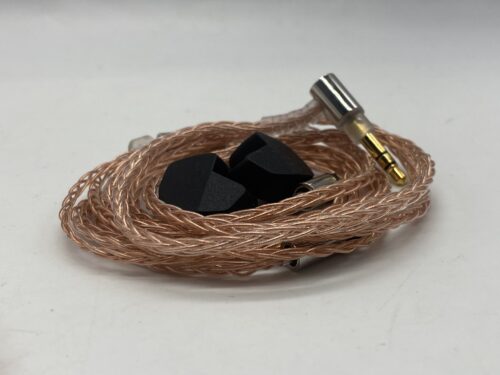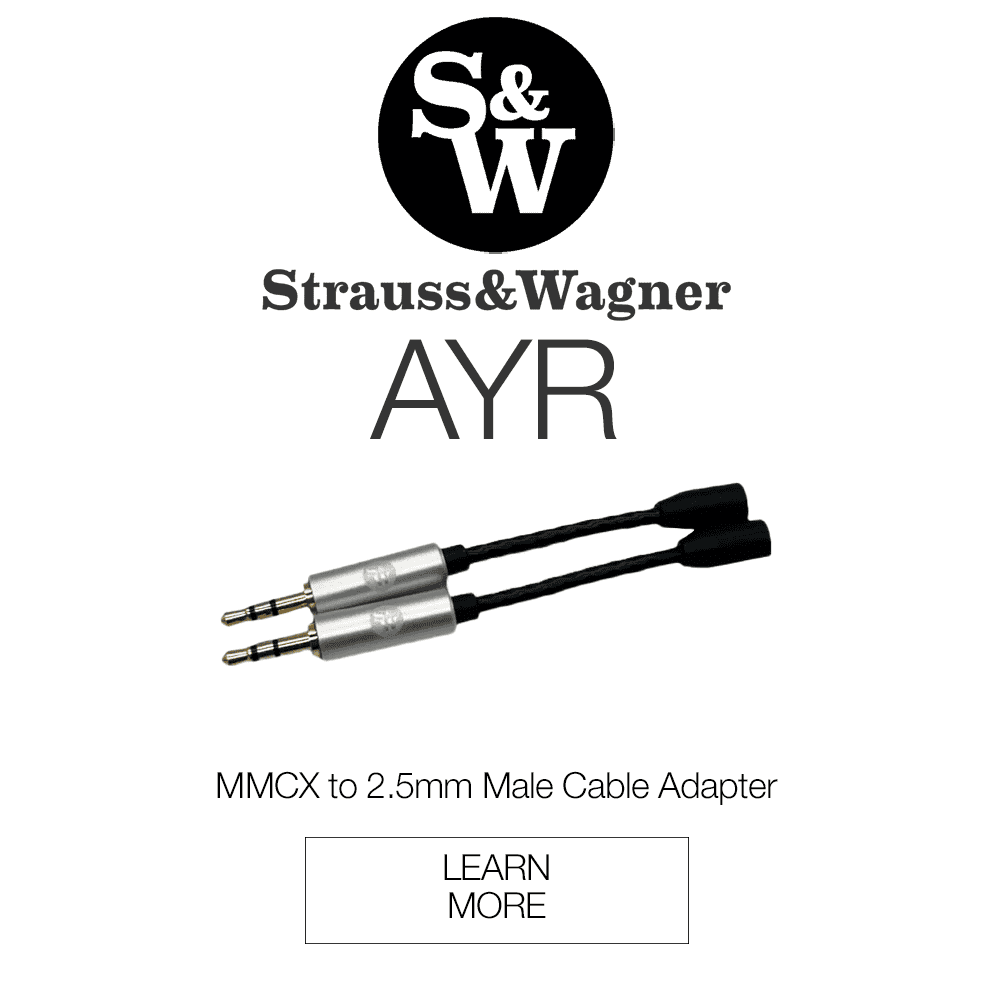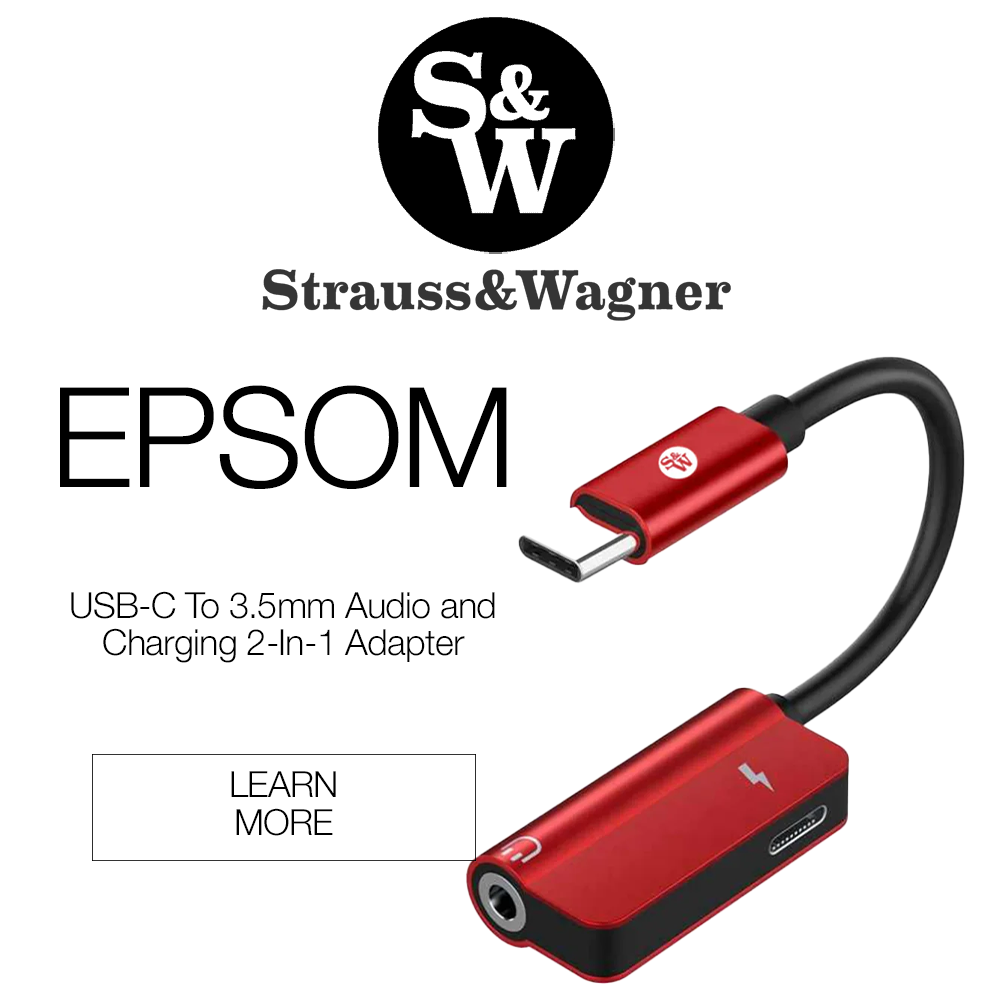Building upon the legacy of the renowned A-series, the A6000 promises an elevated audio experience with its new braided crystal copper cable and familiar ergonomic design. We’re going to delve into the details of what makes the A6000 stand out in today’s crowded market, from its innovative soundstage to its impressive overall performance. Whether you’re a seasoned listener or new to high-fidelity audio, the A6000 is an intriguing option that warrants a closer look.
What You Get
- A6000 In-Ear Monitors
- Silicone carrying case
- Eartips (TYPE E fully wireless exclusive, 5 sizes)
- Ear hooks (TYPE B)
- Instruction Manual
- Final Warranty
Look & Feel
If you’re familiar with Final Audio’s A-series IEMs, the A6000 is more of the same. Its biggest upgrade has nothing to do with its shell, but its cable, which is a new braided crystal copper cable is a nice addition. Other than that, the exterior design of the A6000 isn’t much different from the model it is replacing. With that said, the ergonomic shape of the A6000 is just as comfortable as past models, which I’m happy is unchanged. The A6000 has a shape that is incredibly light and form-fitting, with the shell acting as a natural part of your ear.
Design
The A6000 sees the return of Final Audio’s 6mm f-core dynamic driver. It’s a brass housing that improves magnetic resistance and increases precision. For the A6000, Final Audio introduces a new stainless steel mounting frame that also has a tuning effect on the signal flow. These IEMs have a low impedance and should be easy to drive from any source.
Soundstage
At first, the A6000 didn’t quite grab me with its soundstage, but it opens up the more you listen. There are moments when the A6000 spreads its wings, extending outward to project an immersive exterior headspace. My initial impression of the A6000 was its linearity though, as even though the soundstage is expansive, the sounds are displayed on a flat plain. They don’t show as much dimension as they should but the A6000 still presents a breathable space for the sound elements to showcase their spatial accuracy. It becomes an enticing sound field, but not one that has the most physicality.
The scale of instruments is limited but the separation is impeccable. Layers of sound stack over each other with good articulation, all while highlighting the black space between with an even amount of presence. It reminds me of how precise the A5000 was, but the A6000 is much wider. It feels more technical and studio-like with its surgical imaging and channel separation, but you might be expecting something more cavernous, which the A6000 doesn’t do.
Low End
Like the soundstage, the A6000 might not instantly satisfy you with its bass response, but there’s more to it than you might initially perceive. Certain tracks can reveal the true depth of the A6000, lifting up a grounded sub-bass with clear rumble. There’s a natural shape to the bass frequencies, establishing a subtle weight to the tone. Everything has a very clean timbre, which acts to minimize its impact slightly but emphasizes its separation.
Most of the frequencies resonate underneath the mids, eliminating any warmth or punch from the mid-bass. The frequency response is soft in that way, with all the vibrations emanating from underneath all of the root sound elements. It never has the presence to be a big factor in the scale of the sound signature. However, in terms of clarity and balance, the A6000 offers enough for those looking for a non-dominant bass IEM.
Mids
The midrange is the meat of this sound signature. If you’re primarily listening to physical instruments like acoustic guitars, pianos, and orchestral strings, the A6000 is very detailed and transparent. It all comes across as delicate, but it leads the way for artifacts to be deciphered in the mix. There’s a flatness to the midrange, but it offers a full presentation that aims for precise notes that are played on an even level. This goes for vocals too, which you might expect more forwardness from, but they exist on the same flat plain as the rest of the sound, which might dilute them a bit.
Highs
While the mids make up the majority of frequency content, the highs show the most personality. It has the same delicate response that the mids have, but the frequencies here are much more textured and expressive. There’s an airy quality to them that extends the height and roominess of the stereo field, as it sizzles outward in a blissful tone. It’s easy on the ears, all while reaching layers of glistening color that gives the A6000 more of a character.
Summary
The Final Audio A6000 in-ear monitors beautifully blend refined design and sophisticated sound engineering to create an immersive listening experience. With its lightweight build, precise soundstage, and balanced frequency response, the A6000 caters to those who appreciate clarity and detail over overpowering bass. While its low-end may not appeal to all listeners, the mids and highs deliver a lush and expressive performance, perfect for a variety of music genres. If you’re in the market for IEMs that prioritize sound accuracy and comfort, the A6000 should undoubtedly be on your radar.
| Pros | Cons |
|
|
The Final Audio A6000 is available at Audio46.
Compare the ranking of various headphones, earbuds and in-ear monitors using our tools.
Discuss this, and much more, over on our forum.
---MAJORHIFI may receive commissions from retail offers.


















